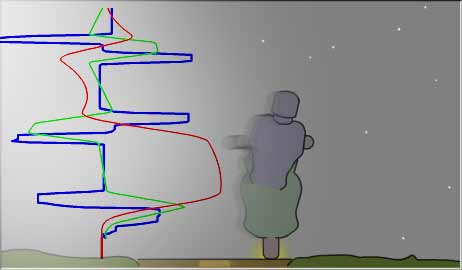Control Theory

Can you drive from A to B?Some machines are easy to control, others are difficult. As a child we learn how to point in the direction of something we want, and we can do that without difficulty. But landing a helicopter on a helipad takes extensive skill and training.If you're the impatient type, skip right ahead to the Hands-on demo. Control theory is a branch of science that deals with questions like when and how hard should the driver of a train apply the brakes in order to halt at the precise spot at the platform. Continuous control systems, such as the examples above are characterized by their order. A finding with important implications for interface designers is that people can be good at controlling positions, velocities, and accelerations. Technically these are known as zeroeth, first, and second order control systems, respectively. Beyond second order, things get very difficult indeed.
What's on these pages?The aim of these webpages is to give you a hands-on feel for what the order of a control system means. You can play with a simple simulation of a motorcyclist on a road with bumpy verges. For each order of control we suggest some things you can try, and indicate some typical difficulties people find.
Where to go from here?The main aim of this page is to provide an online experiential toy for students of human control theory. The descriptions on the pages can serve as an introduction, but for in depth explanation of the theory, we refer to the book:Jagacinski, R. J. & Flach, J. M. (2003). Control Theory for Humans: Quantitative Approaches to Modeling Performance. Mahwah, NJ: Erlbaum. The simulation was designed according to the tinytools principles. For those interested in interaction design, we include a short description on the development process and design decisions underlying the motorcyclist simulation.
|
Last update: Tuesday, December 13, 2011 at 10:18:48 PM.
